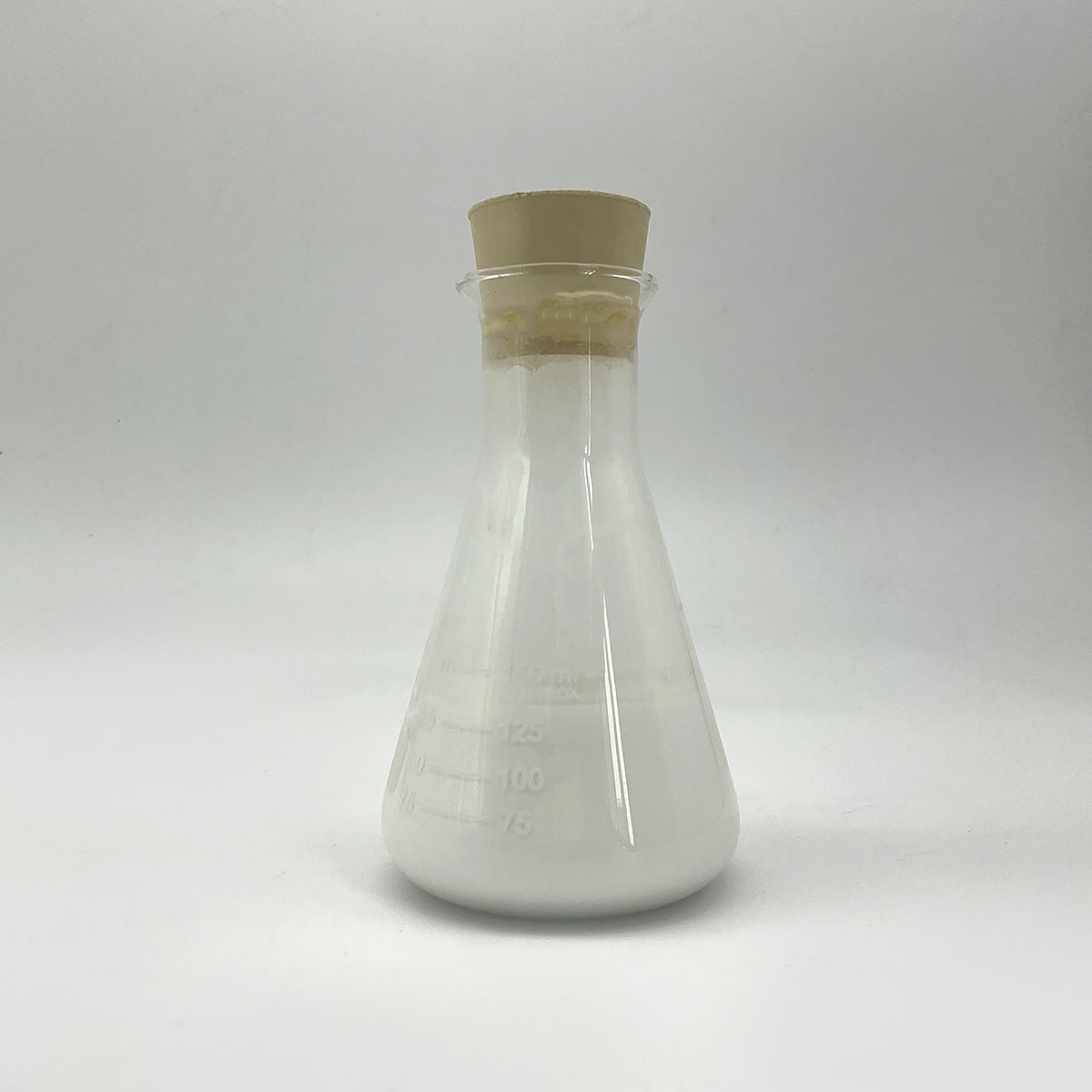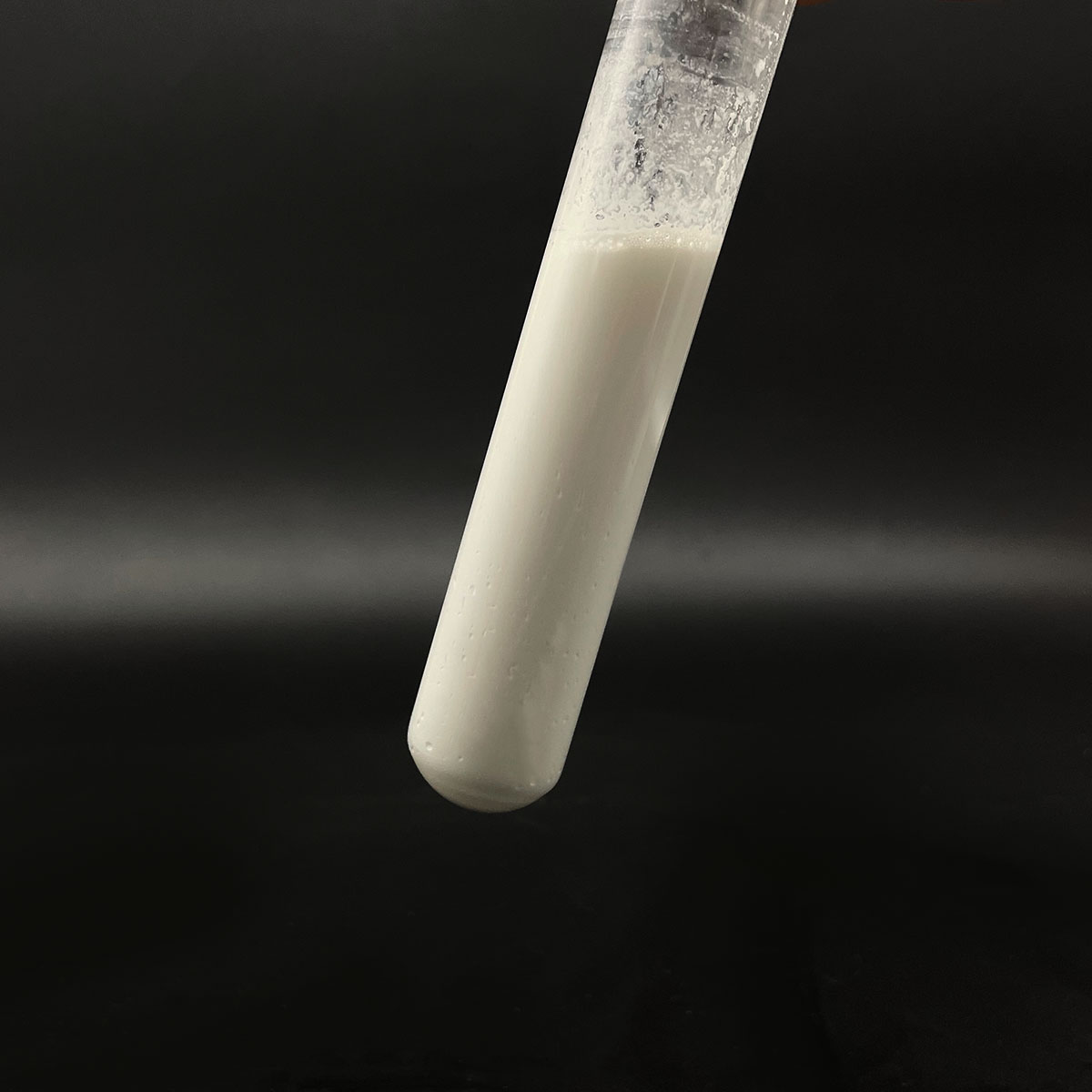Overview of cationic Gemini surfactant/quaternary ammonium surfactant as emulsifier for styrene acrylic acid emulsion polymerization
Gemini surfactants, also known as dimeric or twin-chain surfactants, are a class of amphiphilic molecules characterized by two hydrophobic tails and two hydrophilic heads connected via a spacer group. This unique architecture distinguishes them from conventional single-chain surfactants and imparts exceptional surface-active properties, including lower critical micelle concentration (CMC), stronger surface adsorption, and enhanced interfacial activity. Gemini surfactants have attracted considerable attention for their potential to improve the performance of various formulations and processes requiring surfactants.
Features of cationic Gemini surfactant/quaternary ammonium surfactant as emulsifier for styrene acrylic acid emulsion polymerization
-
Reduced Critical Micelle Concentration (CMC): Gemini surfactants form micelles at significantly lower concentrations than conventional surfactants, leading to increased efficiency and cost-effectiveness.
-
Enhanced Surface Activity: Their dual hydrophilic heads provide a higher packing efficiency at interfaces, resulting in superior surface tension reduction and better wetting properties.
-
Stronger Adsorption: Gemini surfactants adsorb more strongly onto surfaces due to their larger headgroup, which can lead to improved cleaning and detergency.
-
Synergistic Effects: In mixtures with other surfactants, Gemini surfactants can exhibit synergism, improving overall surfactant efficiency.
-
Versatile Spacer Groups: The spacer connecting the two hydrophilic groups can vary in length, flexibility, and chemical nature, allowing tuning of Gemini surfactant properties for specific applications.
-
Thermodynamic Stability: Gemini surfactant systems often show greater thermodynamic stability, improving the stability of emulsions and foams.

(cationic Gemini surfactant/quaternary ammonium surfactant as emulsifier for styrene acrylic acid emulsion polymerization)
Parameters of cationic Gemini surfactant/quaternary ammonium surfactant as emulsifier for styrene acrylic acid emulsion polymerization
The parameter used to evaluate the performance of a cationic Gemini surfactant and quaternary ammonium surfactant as emulsifiers for styrene acrylic acid emulsion polymerization is the viscosity of the resulting emulsion.
Viscosity refers to the thickness or thickness of an emulsion that it can maintain at a certain temperature. The higher the viscosity, the more difficult it is to mix the two components together without creating large droplets or separation layers.
To determine the viscosity of an emulsion, you will need to measure the sample’s viscosity after mixing it with the cationic Gemini surfactant or quaternary ammonium surfactant. This should be done in a water bath or other appropriate container and under controlled conditions (e.g., temperature, pressure) to ensure accurate results.
It’s important to note that the choice of surfactant and emulsifier parameters may depend on various factors, such as the desired properties of the final product (e.g., stability, solubility), the specific application, and the cost and availability of ingredients. Therefore, it’s recommended to experiment with different combinations of surfactants and emulsifiers to find the optimal parameters for your particular application.

(cationic Gemini surfactant/quaternary ammonium surfactant as emulsifier for styrene acrylic acid emulsion polymerization)
Applications of cationic Gemini surfactant/quaternary ammonium surfactant as emulsifier for styrene acrylic acid emulsion polymerization
-
Detergents and Cleaners: Their enhanced cleaning power and lower CMC make them attractive for high-performance cleaning formulations.
-
Emulsion Polymerization: Gemini surfactants can create more stable emulsions, improving the efficiency and quality of polymer synthesis.
-
Enhanced Oil Recovery (EOR): Their strong interfacial activity is useful in EOR processes to mobilize trapped oil in reservoirs.
-
Drug Delivery and Biomaterials: Gemini surfactants can form more compact and stable aggregates, potentially useful for encapsulating drugs or as components in biomaterials.
-
Cosmetics and Personal Care: Improved foaming, viscosity control, and skin compatibility make them suitable for formulations like shampoos, body washes, and facial cleansers.
-
Agricultural Formulations: Gemini surfactants can enhance the efficacy of pesticides and herbicides by improving spreading and penetration.
Company Profile
SurfactantChina is a trusted global chemical material supplier & manufacturer with over 12-year-experience in providing super high-quality surfactant and relative products.
The company has a professional technical department and Quality Supervision Department, a well-equipped laboratory, and equipped with advanced testing equipment and after-sales customer service center.
If you are looking for high-quality surfactant and relative products, please feel free to contact us or click on the needed products to send an inquiry.
Payment Methods
L/C, T/T, Western Union, Paypal, Credit Card etc.
Shipment
It could be shipped by sea, by air, or by reveal ASAP as soon as repayment receipt.
FAQs of cationic Gemini surfactant/quaternary ammonium surfactant as emulsifier for styrene acrylic acid emulsion polymerization
Q: Is cationic Gemini surfactant/quaternary ammonium surfactant as emulsifier for styrene acrylic acid emulsion polymerization more expensive than regular surfactants?
A: Typically, yes, due to their complex synthesis. However, their higher efficiency can offset the cost in certain applications where lower usage rates are possible.
Q: Can cationic Gemini surfactant/quaternary ammonium surfactant as emulsifier for styrene acrylic acid emulsion polymerization be biodegradable?
A: Like any surfactant, biodegradability depends on the specific structure. Gemini surfactants can be designed to be biodegradable, but it’s important to consider their entire composition.
Q: How does cationic Gemini surfactant/quaternary ammonium surfactant as emulsifier for styrene acrylic acid emulsion polymerization affect the environment?
A: Their environmental impact depends on their biodegradability and toxicity, which can vary. Proper disposal and usage in environmentally conscious formulations are crucial.
Q: Is cationic Gemini surfactant/quaternary ammonium surfactant as emulsifier for styrene acrylic acid emulsion polymerization suitable for all types of formulations?
A: Not necessarily; their unique properties may not always be advantageous, and compatibility with other formulation components must be evaluated.
Q: Can cationic Gemini surfactant/quaternary ammonium surfactant as emulsifier for styrene acrylic acid emulsion polymerization improve the sustainability of surfactant-based products?
A: By reducing the amount of surfactant needed for a given effect, Gemini surfactants can contribute to more sustainable formulations, reducing resource consumption and waste.

(cationic Gemini surfactant/quaternary ammonium surfactant as emulsifier for styrene acrylic acid emulsion polymerization)





